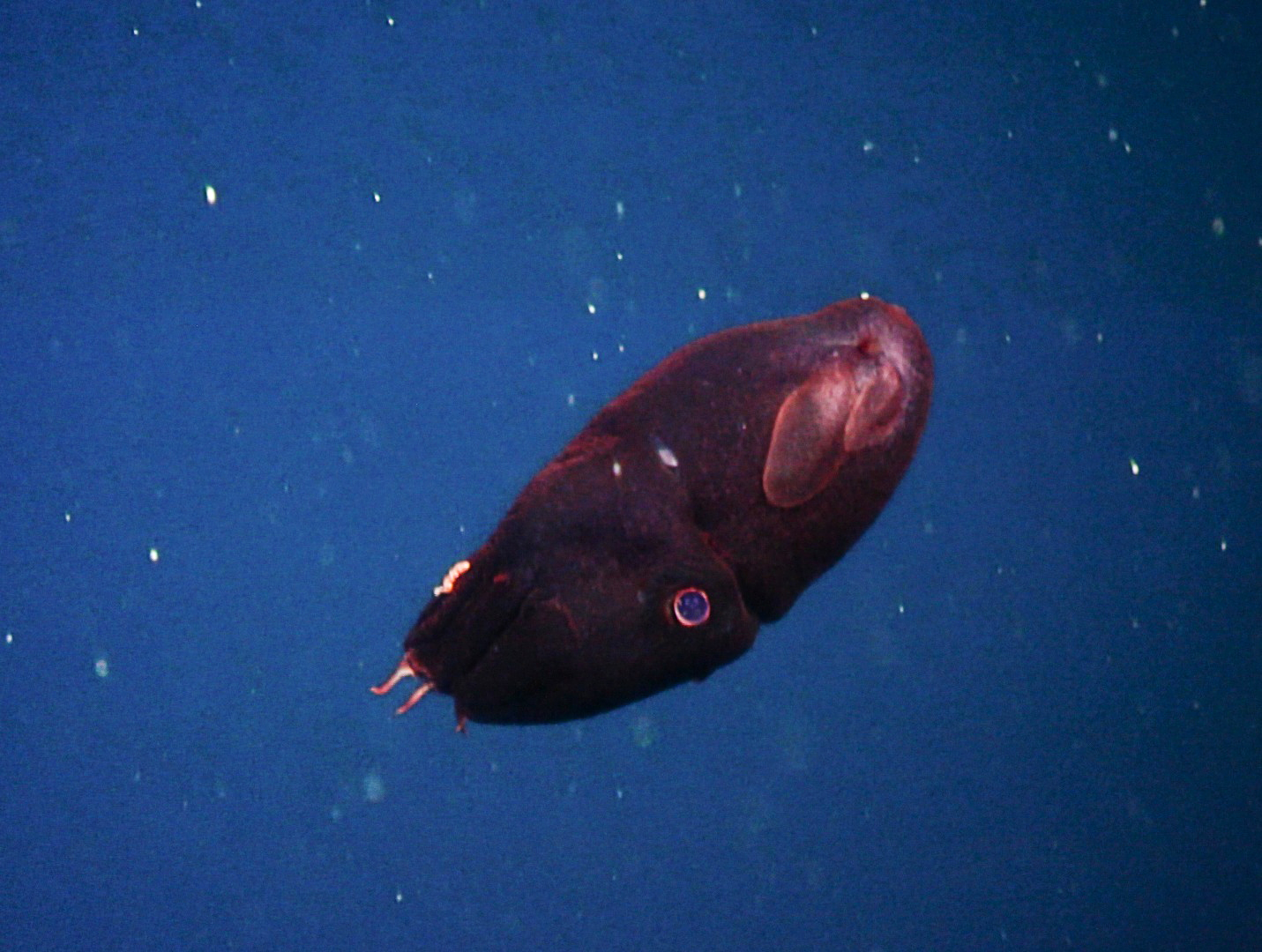
Unique Creatures of the Deep Sea
Of all the ocean’s wonders, deep sea creatures are some of the most fascinating. These species are special because they have adapted to survive and thrive in environments that are bitterly cold, nearly pitch black, and under crushing pressure – environments we have likely never seen.
They come in all shapes and sizes, from small invertebrates to large fish, and many creatures of the deep look like they originated on a different planet or in a different dimension. Despite how odd they might look, these amazing animals are vital to keeping our ocean in balance by maintaining a healthy carbon cycle, whether by decomposing fallen whales, feces from above, or fertilizing marine plants through their own waste.
As many as 100 million species or more may call the deep sea home, many of which we have never laid eyes on due to the darkness of deep sea environments and the challenges of seafloor exploration. Here are some of the amazing animals that live miles beneath the ocean’s surface:
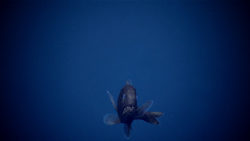
Fangtooth fish. Photo: NOAA Office of Ocean Exploration and Research, Deep-Sea Symphony: Exploring the Musicians Seamounts
Fangtooth fish: Named for their pointed teeth, which are perfect for catching and hanging on to prey, fangtooth fish include two species, the shorthorn (Anoplogaster brachycera) and the common fangtooth (Anoplogaster comuta). They have been recorded at depths of nearly 16,000 feet and may be able to dive even deeper than that. They spend most of their time in the deep, dark waters they call home but rise towards the surface at night if they’re in pursuit of their prey. They are the most active of the deep sea fishes and seek out food rather than sit and wait. Their huge mouths and teeth are to ensure they can attack prey with great might and accuracy. And, because their teeth are so long and sharp, they have developed through evolutionary time a mouth shape that allows them to safely close their mouths without piercing themselves.
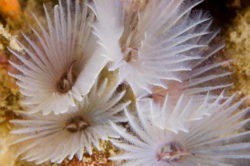
Tube Worms. Photo: Greg McFall
Giant Tube worms: Scientific name Riftia pachyptila, giant tube worms are common near hydrothermal vents in the deep ocean, which spew scalding hot water saturated with chemicals like copper, zinc, iron, and hydrogen sulfide, which would be toxic to most other animals. Some people think giant tube worms are marine plants, and it’s an easy mistake to make since these animals don’t have a mouth, gut, or anus. Through evolution and adaptation, giant tube worms developed a symbiotic relationship with bacteria that live inside the worms and make carbon-based food like sugars for the worms by breaking down the chemicals that flow from the vents.
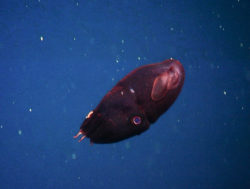
Vampire Squid. Photo: NOAA/MBARI
Vampire squid: Named for their monstrous appearance, their tendency to lurk in the dark depths of the ocean, and their similarities to both squid and octopus, the vampire squid (Vampyroteuthis infernalis) is its own unique group of cephalopod. They have eyes that are proportionately the largest of any animal on Earth so they can see in the dark, a helpful adaptation in the pitch-black waters they call home. These animals aren’t bloodthirsty monsters, but feed instead on marine snow, falling bits of decaying tissue from waters high above. Unlike shallow-water squids and octopuses, they do not expel ink as a defense mechanism because it would not be effective in the deep dark water. Instead, when threatened, they expel a colorless substance that is bioluminescent, confusing potential predators and allowing for a quick escape. The vampire squid lives in the oxygen minimum layer of the ocean (depths of nearly 9,000 feet) and can survive using a highly adapted aerobic metabolism that very few ocean animals possess.
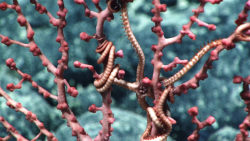
Bubblegum Coral. Photo: NOAA Office of Ocean Exploration and Research, Hohonu Moana 2016
Bubblegum coral: Just as vibrant as their tropical counterparts, bubblegum coral (Paragorgia arborea) live deep below the ocean’s surface where the sunlight can’t reach. These corals are commonly found in the Northern Pacific and Northern Atlantic Ocean and can survive as far down as 4,200 feet! Unlike other species of coral that live in shallower, brighter waters, bubblegum coral relies on filter feeding – grabbing whatever passes them by, usually plankton. They feed by using sticky tentacles on each of their polyps that extend into the water and rely on strong currents to deliver their prey. Bubblegum coral aren’t the only species of deep sea corals – we know at least 3,300 species of deep sea coral call the world’s ocean floor home.
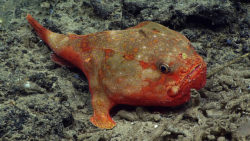
Sea Toad. Photo: NOAA Office of Ocean Exploration and Research, 2015 Hohonu Moana
